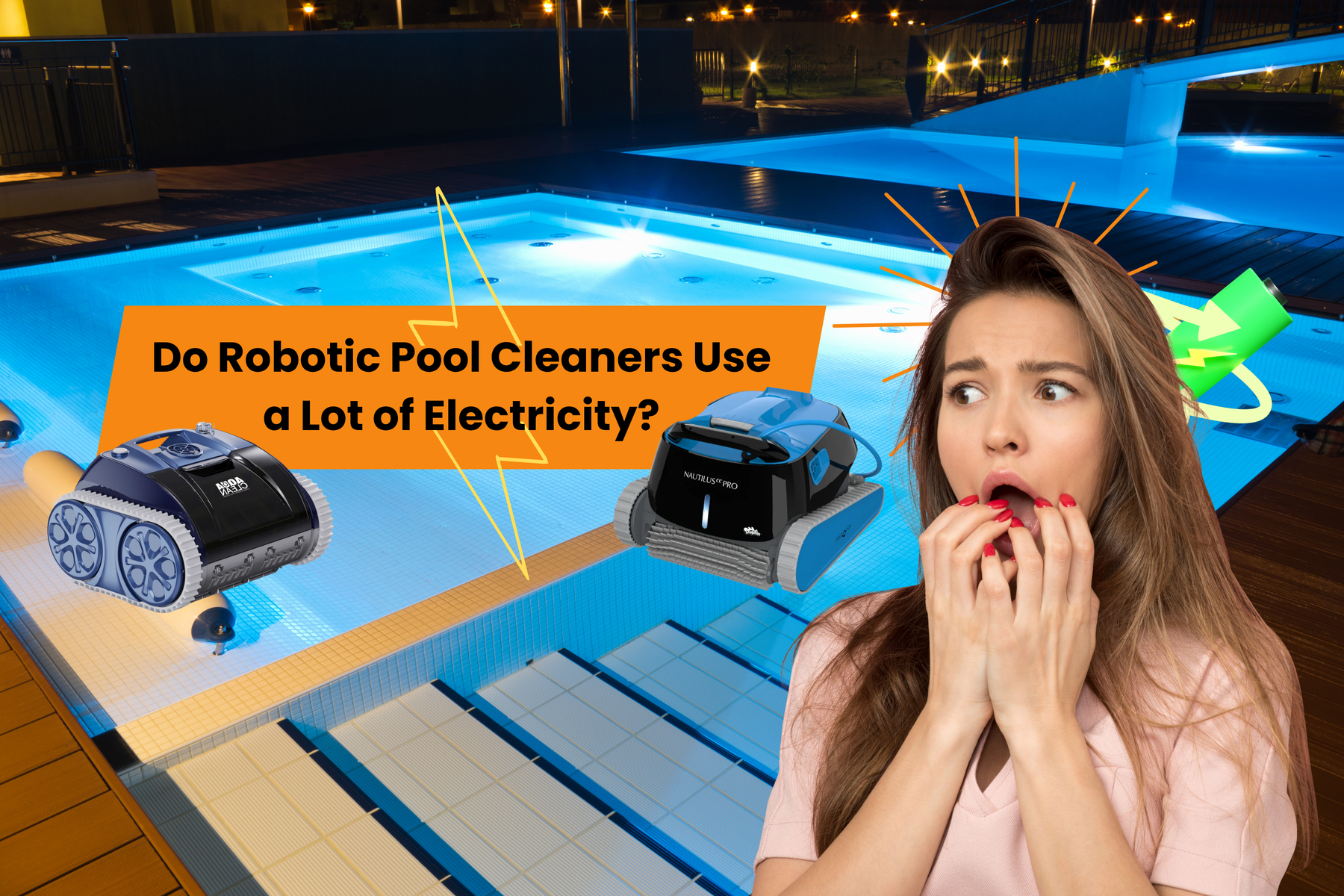
Do Robotic Pool Cleaners Use a Lot of Electricity?
Understanding Robotic Pool Cleaner Energy Consumption
Short answer: Nope! Most robotic pool cleaners use about as much power as a standard light bulb.
Curious how that translates to your energy bill - and how to keep it even lower?
Stick around for tips, real-life comparisons, and smart ways to save power without giving up a clean pool.
Robotic pool cleaners might look like little techy gadgets cruising around your pool, but don’t let their size fool you. They pack a punch when it comes to cleaning - and they do it without draining your energy bill.
Unlike old-school suction-side or pressure-side cleaners that rely on your pool's main pump and filter system, robotic models work on their own. They plug into a regular outlet, use low voltage, and have internal motors that do all the work.
That independence is a game changer for both cleaning power and electricity savings.
How Robotic Pool Cleaners Save Electricity: A Comparison with Traditional Methods
Traditional pool cleaners are kind of like hitchhikers - they grab a ride on your pool pump, which pulls a lot of electricity to get the job done. Most pumps run at 1,000 to 2,000 watts. And since those cleaners run for up to 8 hours a day, that power adds up fast.
Now picture a robotic cleaner like the AutoPilot AquaClean Robotic Cleaner. It runs at just 180 watts. That’s about the same as two old lamps left on for a couple of hours.
Even better, it finishes cleaning in 2 to 3 hours and doesn’t need help from the pump or filter.
In plain terms? Robotic pool cleaners do more while using less.
Low-Voltage Operation and Independence from Pool Systems
Most robotic pool cleaners use a step-down transformer that converts regular household power into a safer, low-voltage current. It’s like giving your cleaner a fuel-efficient engine instead of a gas-guzzling one.
Because they don’t run off your pool’s pump or filtration system, they don’t add wear and tear to your setup. That means less strain on your pool equipment, fewer repairs, and extra savings in the long run.
Think of it like this: traditional cleaners borrow your car and leave the tank empty. Robotic cleaners bring their own ride and barely sip fuel.
Typical Wattage, Energy Use, and Cost Savings
Most robotic pool cleaners use between 150 and 250 watts. Let’s break that down into real dollars.
Say your electricity rate is $0.15 per kilowatt-hour. Running a 200-watt robotic cleaner for 3 hours would cost less than 10 cents.
If you run it three times a week, that's still under $2 a month.
In comparison, your pool pump could cost $20 to $30 monthly just to run a suction-side cleaner. The difference is clear.
Over a season, those savings really stack up.
Key Factors Influencing Robotic Pool Cleaner Electricity Usage
While robotic pool cleaners are efficient across the board, a few factors can make them even better - or worse - when it comes to energy use.
Let’s walk through what matters most.
Cleaner Model, Technology, and Energy-Saving Features
Some models go the extra mile. Consider the AutoPilot AquaClean Robotic Cleaner—it has a triple-motor system and smart navigation. That means fewer passes, less time spent, and less energy used.
Other cleaners may roll with timers, eco modes, or variable-speed motors. Those tweaks let you tailor the run time and power to match your pool’s needs.
Optimizing Cleaning Habits: Cycle Duration, Frequency, and Maintenance
Even the best robotic cleaner can waste energy if it’s overused or poorly maintained.
Here are a few simple tips:
-
Don’t run it daily unless your pool really needs it. 2-3 times a week is often enough.
-
Use shorter cycles if your pool isn’t too dirty.
-
Clean the filter basket after each use so it doesn’t work harder than necessary.
-
Set a timer or reminder so it doesn’t run longer than it should.
Just like you wouldn’t vacuum your living room five times a day, your pool doesn’t need over-cleaning either.
Impact of Pool Size and Complexity on Energy Consumption
Pool layout matters. A simple rectangle is easy. A big, fancy pool with steps and benches takes more passes.
The good news is that many robotic cleaners have smart scanning features to learn your pool’s layout and plan efficient cleaning routes. That means shorter cycles and less power use - even in oddly shaped pools.
If your pool is large or has tricky features, choosing a model that can handle it well is key to keeping energy use low.
Final Splash
Robotic pool cleaners are built with energy savings in mind. They use low voltage, work independently from your pool’s pump, and clean faster than older systems.
With smart use and the right model for your pool, they’re one of the most affordable and energy-efficient ways to keep your pool looking great.
Want clean water without the high electric bill? Let your robotic pool cleaner do the work - and save while it does.
Related reading:
- Are Robotic Pool Cleaners Safe for Vinyl Liners?
-
Robotic Pool Cleaners Pros and Cons: What You Need to Know Before Buying
-
How Much Do Robotic Pool Cleaners Cost?
-
Discover the Fastest Robotic Pool Cleaners for Hassle-Free Maintenance
-
How Do Robotic Pool Cleaners Work? The Smart Way to a Sparkling Pool



Leave a comment